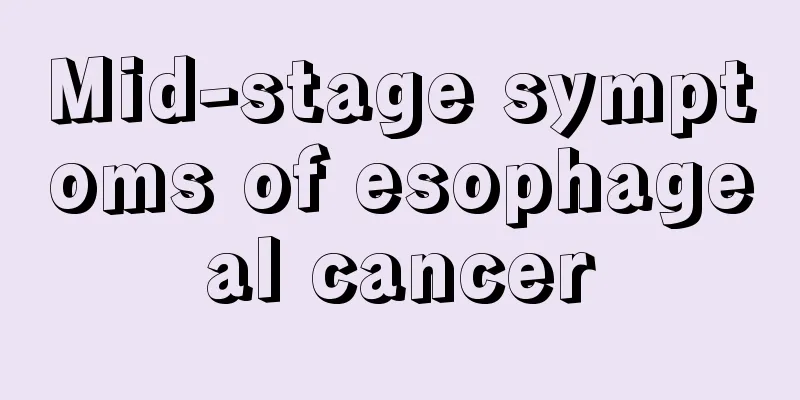What eye drops should I use for glaucoma

|
We always hear about glaucoma and cataracts. Glaucoma and cataracts are indeed connected, but now a few people only suffer from the disease and do not combine the two diseases. Generally, the main cause of glaucoma is retinal damage or excessive myopia. If it is not treated in time, glaucoma patients should not rush to use eye drops, but first look at the principles of treatment. Treatment principles Glaucoma is one of the main causes of blindness in my country, and the visual function damage caused by glaucoma is irreversible and the consequences are extremely serious. Generally speaking, glaucoma cannot be prevented, but if it is detected early and treated properly, the vast majority of patients can maintain useful visual function throughout their lives. Therefore, prevention of blindness due to glaucoma must emphasize early detection, early diagnosis and early treatment. Glaucoma is a group of clinical symptoms or eye diseases that threaten visual function and are mainly related to increased intraocular pressure. That is, the intraocular pressure exceeds the limit that the tissues inside the eyeball, especially the retina, can withstand, which will cause visual function damage. The most typical and prominent manifestation is optic nerve atrophy and visual field loss and reduction. If effective treatment is not taken, the visual field may be completely lost and eventually blindness may occur. 1. Primary glaucoma Primary glaucoma is usually bilateral, but the onset of the disease in one eye may be successive; primary glaucoma can be divided into two types: angle-closure and open-angle. 1. Angle-closure glaucoma Angle-closure glaucoma is the most common type of primary glaucoma. Most of them are over 45 years old, and it is rare to be under 30 years old. Because obvious eye congestion may occur during an attack, it was formerly called congestive glaucoma. If angle-closure glaucoma is treated correctly in the early stages, satisfactory results can often be achieved, and even a cure can be achieved. The pathogenesis of angle-closure glaucoma is divided into four stages: 1. Attack stage; 2. Intermittent remission stage; 3. Chronic progressive stage; 4. Preclinical stage. The onset of angle-closure glaucoma often has some triggers, such as emotional fluctuations, excessive mental or physical fatigue, reading for too long, or watching TV or movies. At the beginning of the attack, the patient feels some mild eye swelling and headache or nausea. During the day, vision becomes foggy (foggy vision), and at night, there is iridescence (rainbows surrounding the lights). Patients often seek medical treatment only when this phenomenon occurs frequently or the symptoms are severe and can no longer be relieved. At this time, intraocular pressure rises sharply and vision is severely reduced, so that only light perception remains (the affected eye cannot see anything, only some light). At this time, it is necessary to carry out emergency treatment without delay to quickly control the intraocular pressure and lower it so that vision can gradually recover. If not treated correctly, because glaucoma causes irreversible damage to vision, after multiple attacks, vision will become worse and worse, and the final result is blindness. When glaucoma occurs, some cases are often misdiagnosed as iridocyclitis in ophthalmology, or gastroenteritis and migraine in internal medicine, and the opposite treatment is used, which makes the condition worse. If angle-closure glaucoma can be detected early, it can be cured through surgical treatment and achieve satisfactory results. However, if the opportunity for surgery is missed, even if the surgery is performed, the effect will be greatly reduced. 2. Open-angle glaucoma Open-angle glaucoma is also called simple glaucoma. Open-angle glaucoma progresses very slowly and has no obvious symptoms, so it is not easy to detect early. Some patients may even become blind in one eye without knowing when the disease started. This eye disease, which gradually causes blindness without any symptoms, is even more dangerous. The age of patients ranged from 20 to 60 years old. Symptoms: Open-angle glaucoma has almost no symptoms in the early stages. Only when the disease progresses to a certain extent will the patient experience blurred vision, eye swelling, headache, and sometimes rainbow and foggy vision. In the late stage, when the visual field of both eyes (the range that the eyes can see) is reduced, night blindness and movement difficulties may occur. If the patient often has the above symptoms, he needs to see an ophthalmologist for a systematic and detailed examination to make a clear diagnosis. If glaucoma is diagnosed, correct treatment is necessary to prevent vision loss. Treatment usually starts with medication, and then surgery is considered if it is ineffective. |
<<: What eye drops are used for itchy eyes_Eye drops for itchy eyes
>>: Eye mucus after applying eye drops
Recommend
Does thyroid cancer require surgery?
Thyroid cancer is a common malignant tumor of the...
Side effects of head radiotherapy
Radiotherapy is one of the more effective treatme...
Experts tell you how to effectively remove stool
Detoxification and beauty care is a hot topic tha...
What should I do if I fall in love with a married man and can't help myself?
Love is a topic that people can never discuss cle...
Black streaks appear on teeth
Everyone wants to have white and strong teeth, bu...
What are the main causes of colon cancer?
Some epidemiological studies on colon cancer have...
Can I eat zongzi if I have diarrhea
The Dragon Boat Festival is coming soon. There ha...
Swollen butt
Many people often find their buttocks red and swo...
Is it normal for women to have abundant pubic hair?
Whether male or female, pubic hair will grow afte...
What are the symptoms of chronic alcoholism?
There are many people who like to drink in life, ...
Why do I sweat easily?
Under normal circumstances, everyone will sweat, ...
What essential oil is good
Essential oils are mainly a kind of fragrance ext...
What are the dangers of colorectal cancer
The incidence of colorectal cancer is increasing ...
How long does it take for the anthelmintic to take effect?
It is normal for children to have roundworms in t...
What does the Department of Oral Rehabilitation treat
There are various departments in the hospital, an...









